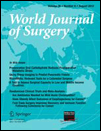Biochemical Profile and Outcomes in Trauma Patients Subjected to Open Cardiopulmonary Resuscitation: A Prospective Observational Pilot Study
Abstract
Background
The predictive factors to regain a heartbeat following emergency department resuscitative thoracotomy (EDT) for trauma are poorly understood. The objective of the present study was to prospectively assess the electrolyte profile, coagulation parameters, and acid-base status from intracardiac blood samples in trauma patients subjected to open cardiopulmonary resuscitation (CPR) in the presence of established cardiac arrest.
Methods
All patients who underwent EDT following trauma were considered for inclusion. Prior to the injection of any resuscitative medications, a sample of intracardiac blood from the right ventricle was obtained for analysis.
Results
During the study period, a total of 22 patients had intracardiac blood samples obtained and were eligible for analysis. Twelve patients never regained cardiac activity, and 10 patients transiently regained a heartbeat for a mean of 51 ± 69 min, but ultimately died. Some 91 % (20/22) of patients presented with severe acidosis (pH < 7.20). The pCO2 was <45 mmHg in 68 % (15/22) of patients, and the pO2 level was >75 mmHg in 77 % (17/22) of patients. Patients who never regained cardiac activity had a significantly higher lactate level than those with a return of cardiac rhythm (17.1 ± 2.6 vs. 10.6 ± 4.9 mmol/L, p = 0.018). The sodium and potassium levels were higher for those who never regained a rhythm than for those who did regain a pulse (sodium: 155 ± 14 vs. 147 ± 9 mmol/L, p = 0.094; potassium: 6.0 ± 1.1 vs. 4.6 ± 1.0 mmol/L, p = 0.014). Severe hyperkalemia (potassium > 5.5 mmol/L) occurred significantly more often in patients who did not regain a heart beat (p = 0.030). Coagulopathy (INR > 1.2 and/or prothrombin time >15 s and/or platelet count <100,000/μL) was noted in 96 % of patients.
Conclusions
Most patients undergoing open CPR have normal blood gas levels. Severe lactic acidosis, hyperkalemia, and hypernatremia are associated with decreased probability for return of cardiac function. Calcium and magnesium levels were not significantly different between the two groups, making the therapeutic role of these electrolytes very questionable.




